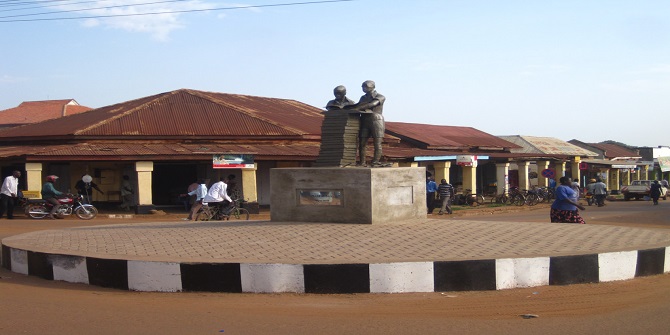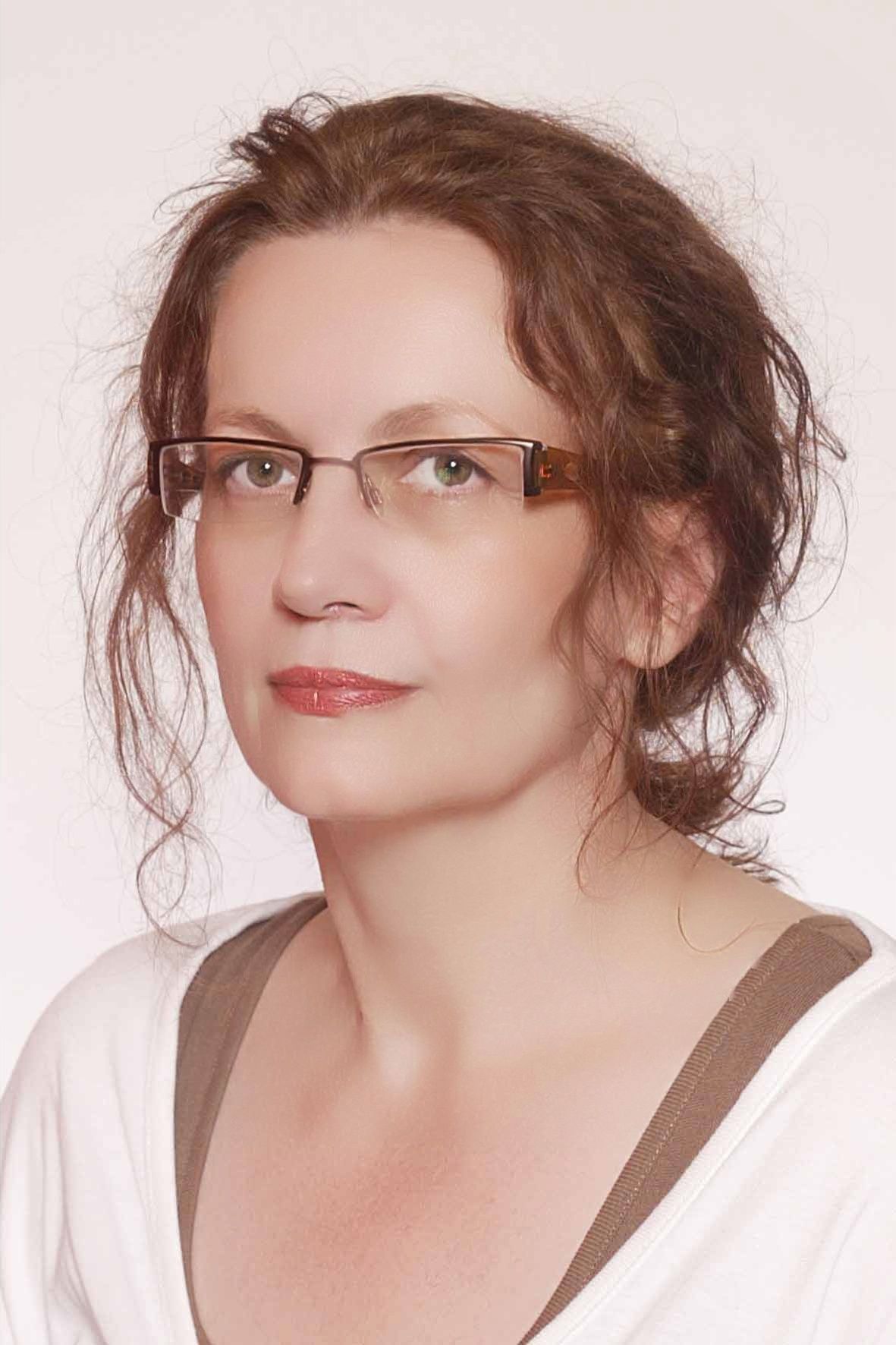
You might be wondering: what is this picture in the website header? It looks like a dirt road, some washed-out colours, blue, white and red. What does this have to do with research, with justice, or with security, in areas caught up in violent conflict or just coming out of it?
I took this photo a few years ago in a country recovering from war. What you see is a stone positioned by the side of the road to tell passers-by that this road had been checked for land mines. Yet, declaring a formerly mined area safe requires many nuanced steps. The stone shows what these are. The white paint signifies that the area is deemed clear and safe whereas the red side points towards an area where further work is needed; nobody should set foot there. Two areas, very close together and marked on the same stone, yet worlds apart in how far they have come in their recovery from war. The blue paint in the middle is a reminder that there might be dangerous objects other than land mines: blue marks the discovery of the site of a battlefield. Here, ammunition, or other reminders of brutal encounters, continue to make life dangerous and challenging far beyond the official end of war.
In the years since I took this photo, the stone and its markings have come to symbolise for me what happens during violent conflict and in its aftermath. Change is impossible without using the tools that are readily available – such as the stone – to mark progress. Reconstruction does not mean that everything will progress at the same speed, with the same information: one side might be white, another still red, the third marked with blue for the unknown trials that await on the road to peace and reconciliation. Success, further challenges, and uncertainty are often found very close together.
In the Justice and Security Research Programme we think about places experiencing or coming out of violent conflict in a similar way. Even with supposedly fixed categories such as justice and security, we emphasise that seemingly similar challenges need to be viewed in their particular context. Red and white markings may occur very close together but signify two very different situations. Unknown areas, such as the blue-marked battlefield, need much more detailed understanding to know what role they will play in providing justice and security. What is always needed is a grounded assessment of which tools are readily available to help improve the situation for those caught up in violence or seeking to rebuild their lives.
A dirt road, some washed out colours. It turns out that this picture can tell us a lot about justice and security in situations of violent conflict.
Mareike Schomerus is the Consortium Director of the JSRP.





